[ad_1]
There’s one issue uniquely rewarding about harvesting apples out of your specific particular person tree. These timber flourish in a number of america, with species hardy in zones 3 by means of 9, and there are fairly just a few well-known varieties that you just’d have the flexibility to domesticate. You presumably could even develop decorative species for his or her stunning booms.
Nonetheless, there are about as many pests that love these timber as there are kinds of apples you’ll uncover at your native grocery retailer. These apple pests fluctuate in severity; some you presumably can merely ignore, whereas others must be handled ahead of it’s too late. Some damage leaves, some girdle bark, and a few burrow their methodology appropriate into the fruit.
Whether or not or not or not you’ve been rising a beloved tree for just a few years or are merely now establishing your orchard, familiarizing your self with these pests is an efficient suggestion. We’ve assembled an inventory of 13 pests you may uncover consuming your apples or timber to information you.
As a standard observe for systemic pesticides, by no means spray whereas your timber are blooming. This damages the flowers and any pollinating and useful bugs spherical your timber. Plenty of the systemic pesticides beneath will damage useful bugs anyway, so use warning when making use of them in a house yard.
Wooly Apple Aphids
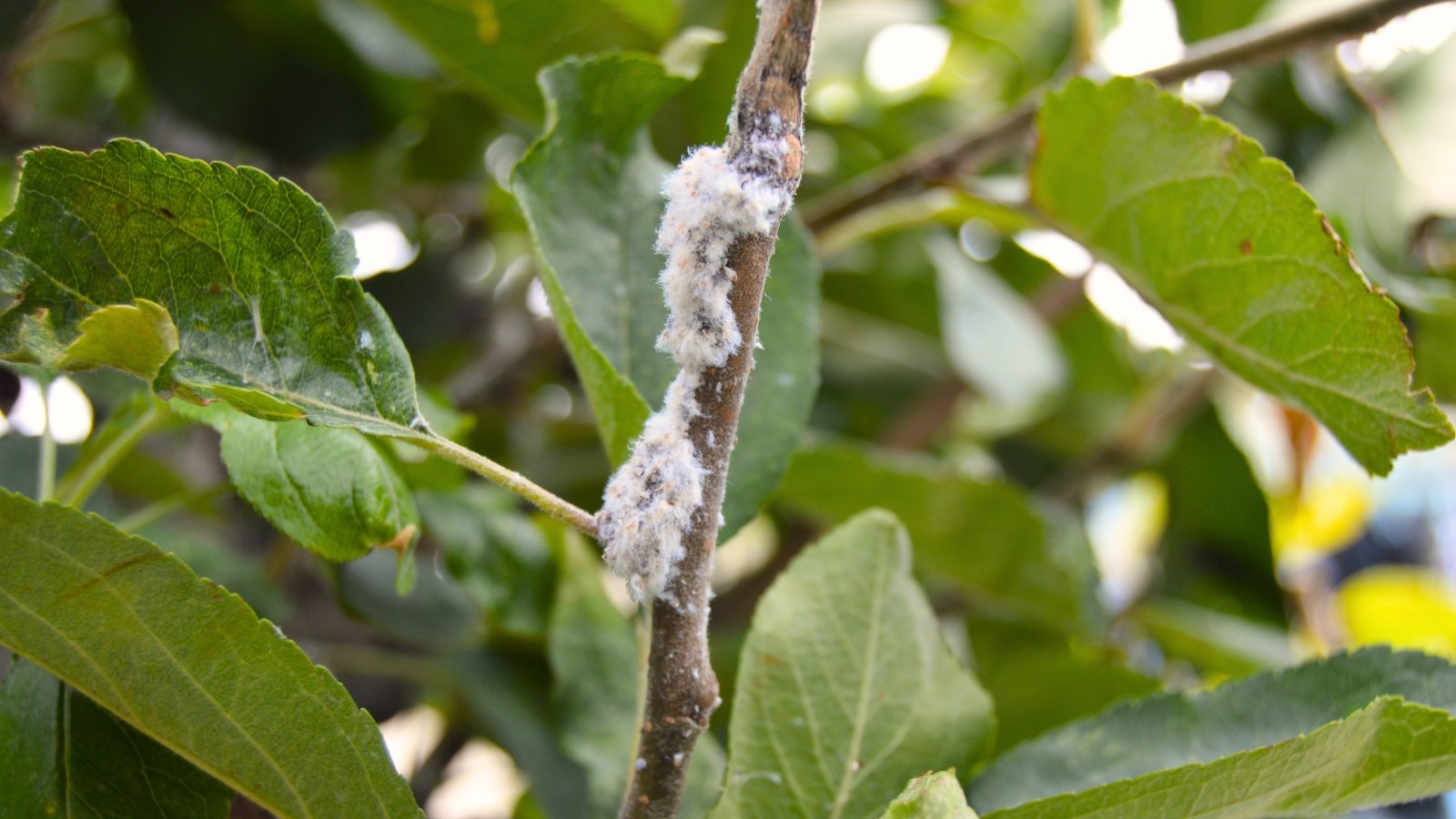

Wooly apple aphids are specialist pests on apple timber. They feed on the bark of newest twigs barely under the leaves, and so they additionally furthermore chew spherical pruning cuts and utterly completely different wounds or cracks. Wooly apple aphids even eat roots, which is often the place they reside all by way of winter. Knobby galls type the place these aphids have been feasting.
Galls on twigs and roots are the obvious symptom of wooly apple aphids. You may also see the aphids themselves, which look like wooly so much. Furthermore they go away honeydew behind and might set off visibly curling leaves.
The galls improve in measurement over time and develop to be a easy methodology for fungal pathogens to enter the tree. Primarily, wooly apple aphids slowly reduce the properly being of timber and make them further inclined to utterly completely different pathogens. These aphids aren’t a dying sentence, however you will want to nonetheless try and deal with them.
To deal with wooly apple aphids, shield a watch out for mannequin new colonies and galls. Embrace insectary vegetation in your orchard that invite parasitic wasps and syrphid flies to feed on these aphids. At first sight, maintain with pesticides akin to malathion, in any other case you presumably can try utilizing a horticultural oil spray all through the delayed dormant interval. Phrase that you just’d have the flexibility to maintain colonies on twigs, however there’s not fairly a bit you can do to deal with root-feeding colonies.
Fully completely different Aphids
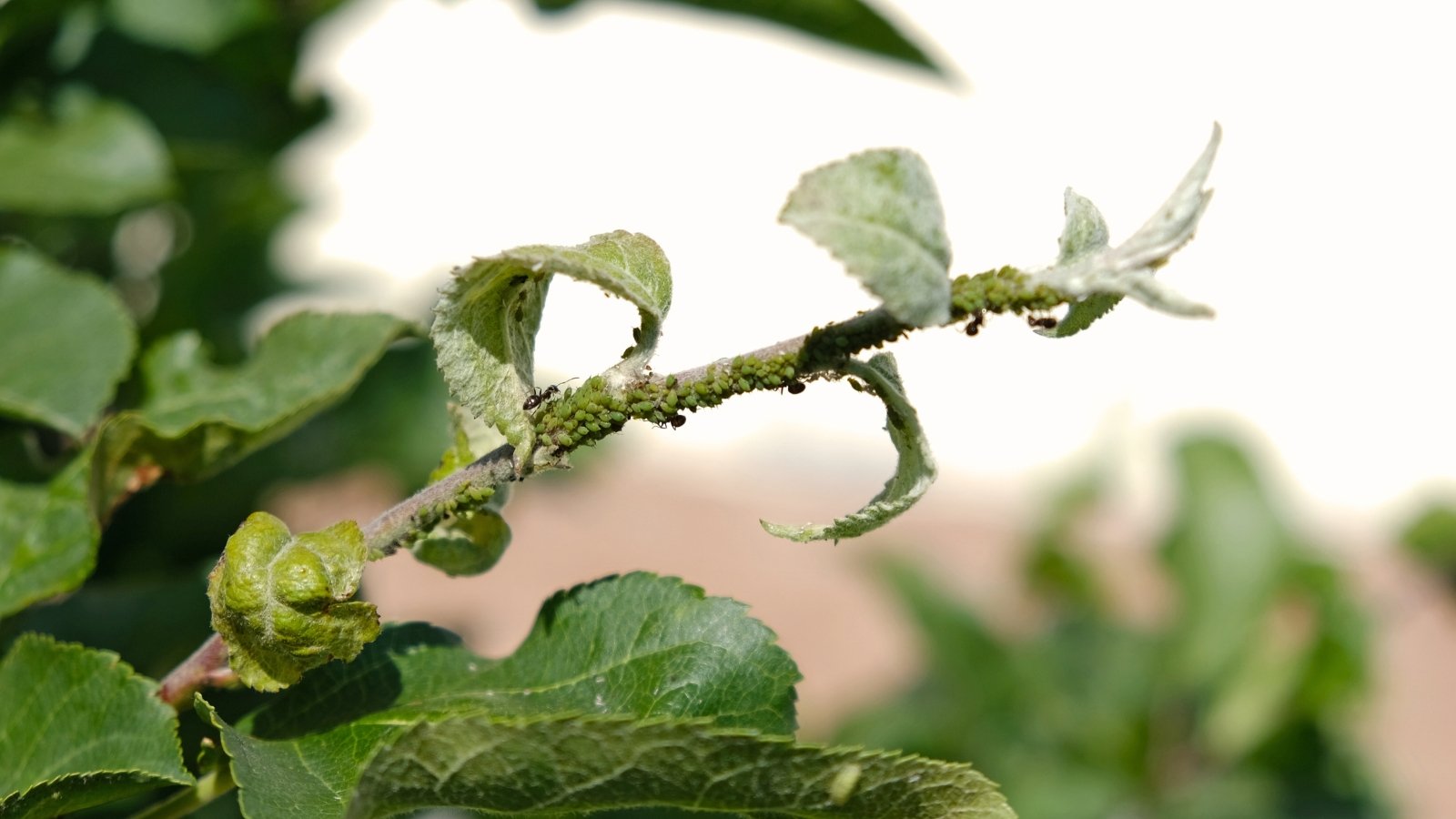

Fairly just a few utterly completely different aphid pests prey upon apple timber, together with the inexperienced apple aphid, rosy apple aphid, and spirea aphid. The high-quality particulars differ from species to species, however usually, these pests feed on the tree’s phloem vessels and reduce the tree’s widespread energy. Furthermore they produce honeydew, which attracts sooty mould.
You possibly can even see the aphids themselves. Whereas the inexperienced apple and spirea aphids are inexperienced, the rosy apple aphids are gentle pink. Moreover, aphids may set off deformed fruits or curled and sticky leaves. Sooty mould could even be an indicator of aphids. The darkish mycelial threads of this fungus look like soot, making it pretty straightforward to search out out.
Aphids are typically not enormously damaging to timber. You presumably can in all probability ignore them in case your tree is in another case in good properly being or blast them with a sturdy stream of water from a hose. Nonetheless, when you’ve obtained a youthful tree that seems stunted from a excessive aphid infestation, or if sooty mould is getting uncontrolled, you may should step in.
These aphid species have many pure predators, akin to girl beetles and lacewings. If these predators don’t get the aphids first, you presumably can apply a horticultural oil spray or insecticidal cleaning cleansing cleaning soap. Shield a healthful inhabitants of host vegetation for useful bugs as a preventative measure.
Borers


Quite a few borers, together with the flathead apple tree borer, will prey on apple timber in durations of drought. The larvae of those pests girdle limbs and the trunks of timber, which may kill limbs and push timber into decline.
Assaults from these pests are usually on the sunny aspect of the tree, the place you may observe holes with oozing sap. You may also uncover a sawdust-like provides which is the excrement of the borers. Flaking bark and ineffective limbs are furthermore indicators of borers.
Borers aren’t a excessive hazard, however they may push already-weak timber correct proper right into a downward spiral. And whereas they most definitely gained’t kill a complete tree, you presumably can undoubtedly lose some tree limbs to borers. Retaining timber in good properly being in order that they may resist borers is vital.
Sadly, there isn’t actually a technique to maintain borers. You presumably can try and stop them all through the primary place with trunk sprays that comprise parts like pyrethrin. Wrap trunks of youthful timber to dam entry by borers.
The proper borer prevention is widespread vigor and good tree properly being. Shield timber well-watered, notably all by way of drought. To your greatest means, steer clear of damaging the tree’s roots when mowing the yard. Take away any ineffective limbs shortly to steer clear of infestation ahead of it escalates.
Codling Moths
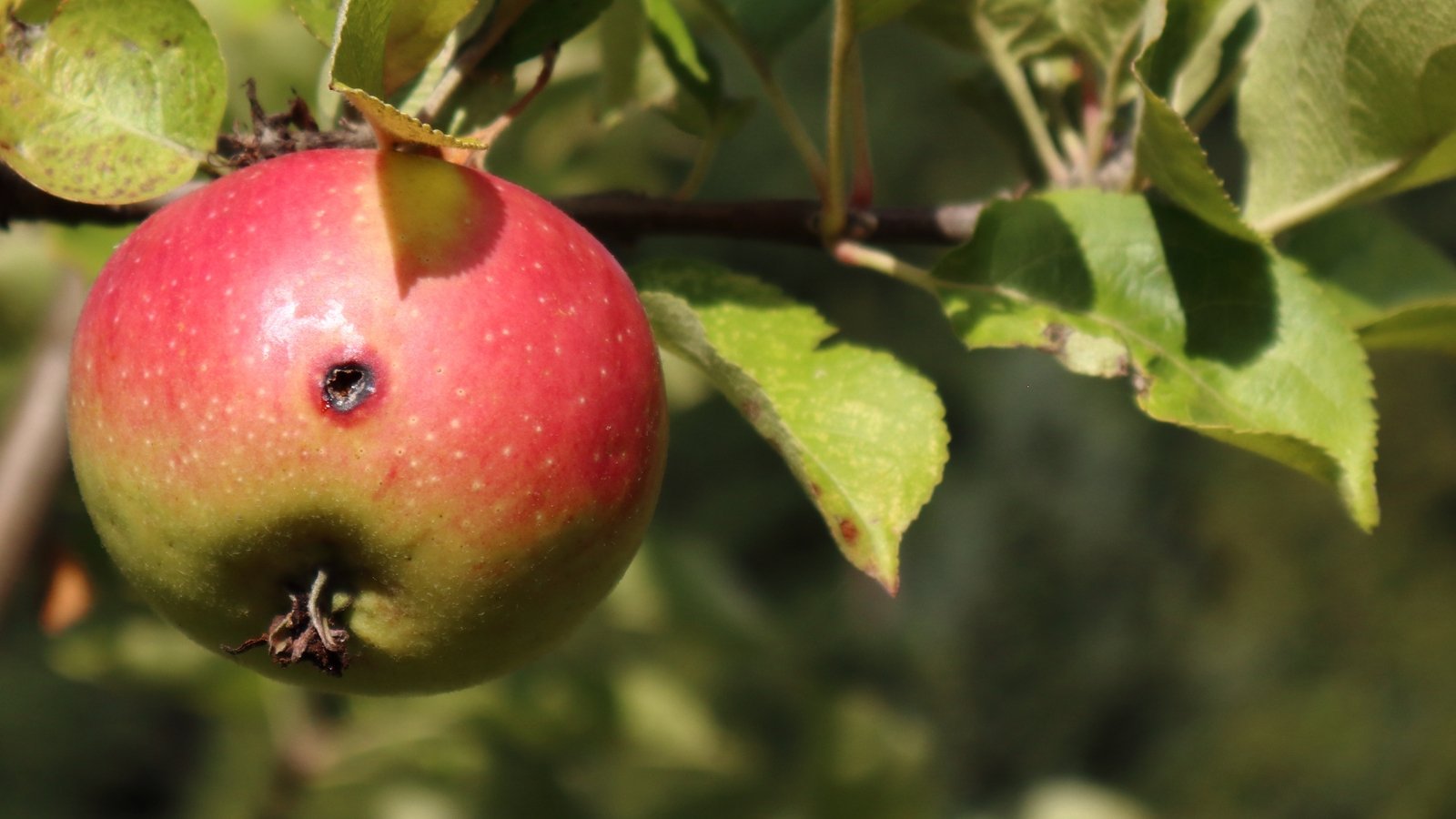

The codling moth is the grownup form of the conventional cartoon worm that lives in apples. The moths lay their eggs on or close to rising fruits, and the larvae make their methodology into the fruits by means of the best the place the flower petals have been related.
You’ll know you’ve got received gotten a problem with codling moths once you uncover worms in your apples or in case you see entry and exit holes all through the fruits. You might uncover the pests’ excrement on the fruit. The apples may rot all through the entry and exit holes, and the fruits may fall appropriate off the tree.
Whereas codling moths gained’t kill timber, they may totally spoil your harvest, making them a pest of paramount significance. Infested apples gained’t look too appetizing to start with, and nobody should chew correct proper right into a wormy apple.
To forestall codling moths, skinny fruit constantly and take away any infested fruit as shortly because of it’s found. Attempt bagging apples to guard them. You could too apply fairly just a few pesticides, together with carbaryl and malathion, however they gained’t have any have an effect on on larvae already inside fruit.
Japanese Beetles
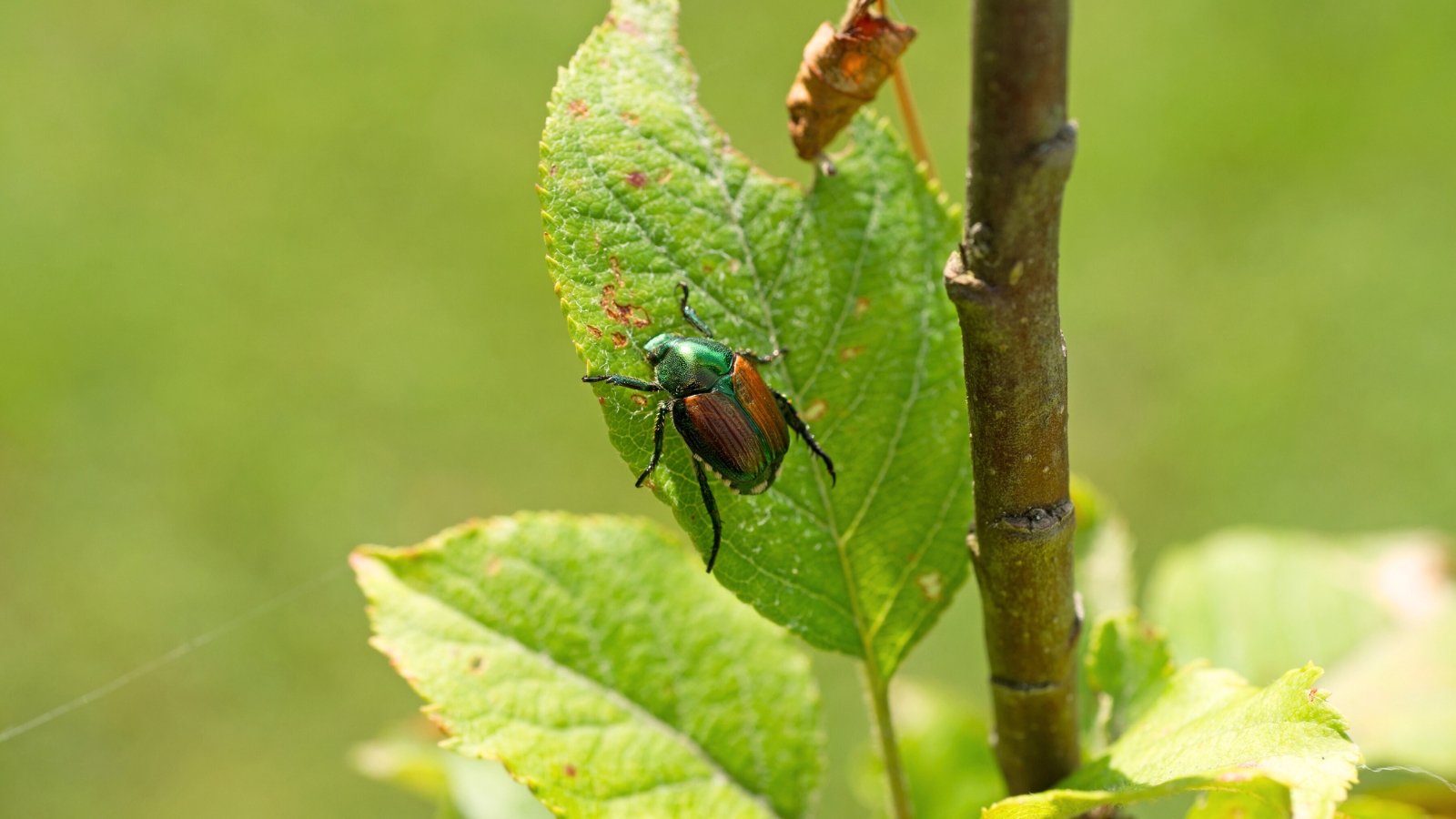

Japanese beetles have a selected look, with metallic blue-copper our our our bodies that shine all through the daylight. They seem principally in June and July, feeding on the leaves of many vegetation. Throughout the event you’re seeing this pest in your apple timber, you’re most definitely seeing them elsewhere in your yard, too.
These beetles make small holes all through the leaves. These holes accumulate, and ahead of you already understand it, there’s barely any leaf left. Japanese beetles may eat broken fruits as efficiently. They’re straightforward to search out out. You could nearly positively see these massive, distinct pests. They gained’t be laborious to ID.
Fortunately, Japanese beetles don’t set off fairly a bit damage to apple timber. It’s unlucky that they chew up the leaves, however a vigorous, healthful tree can lose just a bit little little bit of foliage. The beetles’ practice tends to wane by August.
You presumably can try and administration Japanese beetles with pesticides that embrace carbaryl, however repeated use can truly improve mite populations. You might wish to uncover Japanese beetle traps, which you will need to place in any case 50 ft from the vegetation you purpose to guard. Throughout the event you’ve had factors with Japanese beetles beforehand, try making use of useful nematodes all through the soil of your tree to stop emergence of overwintering larvae.
Leafrollers
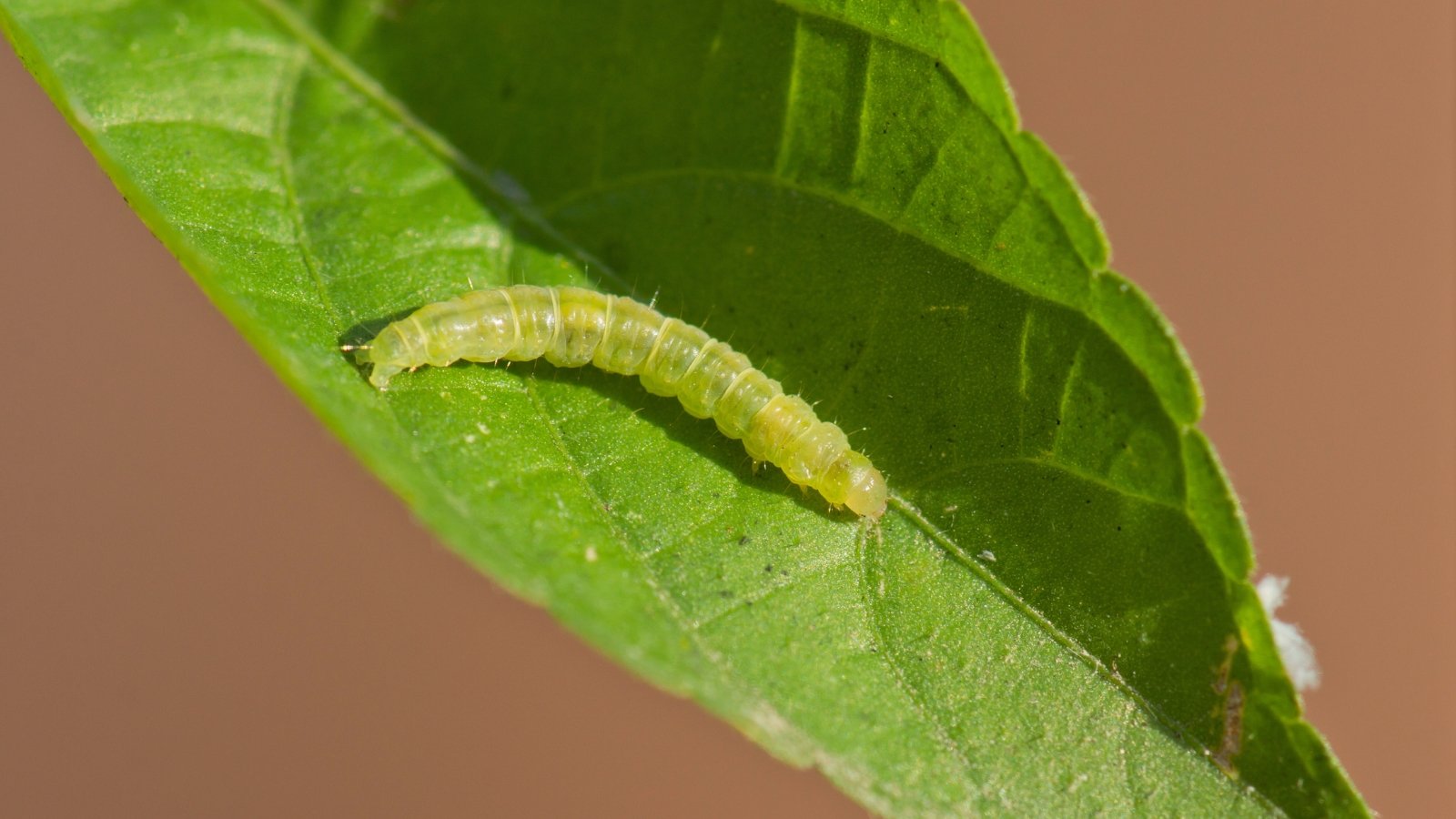

Quite a few leafroller pests can also be concerned about your apple timber. Whereas they aren’t a devastating pest to have spherical, they chew up leaves, roll up leaves, and lay their eggs all through the leaves. Typically, their rolling habits be a part of leaves to fruits, and the leafrollers damage the fruit, too.
The principle technique to search out out leafrollers is all through the set up; you’ll uncover that leaves seem rolled. The leaves may even be clearly chewed up, and it is attainable you may even see webbing inside them. Small cavities in fruits is also an indication of leafrollers.
Leafrollers aren’t an infinite concern for timber, and so they additionally aren’t going to kill your tree over time. Nonetheless, they may damage the fruits, which is a gigantic disappointment. In small or weak timber, leafrollers’ defoliation may probably be dangerous.
These pests are straightforward to cope with. They’ve many pure predators, together with parasitic wasps, that may do the job for you, notably in case your yard has vegetation to host them. If not, you presumably can apply Bacillus thuringiensis (aka B.t.), which kills leafroller caterpillars with out harming any of the pure predators you hope to protect.
Leafminers
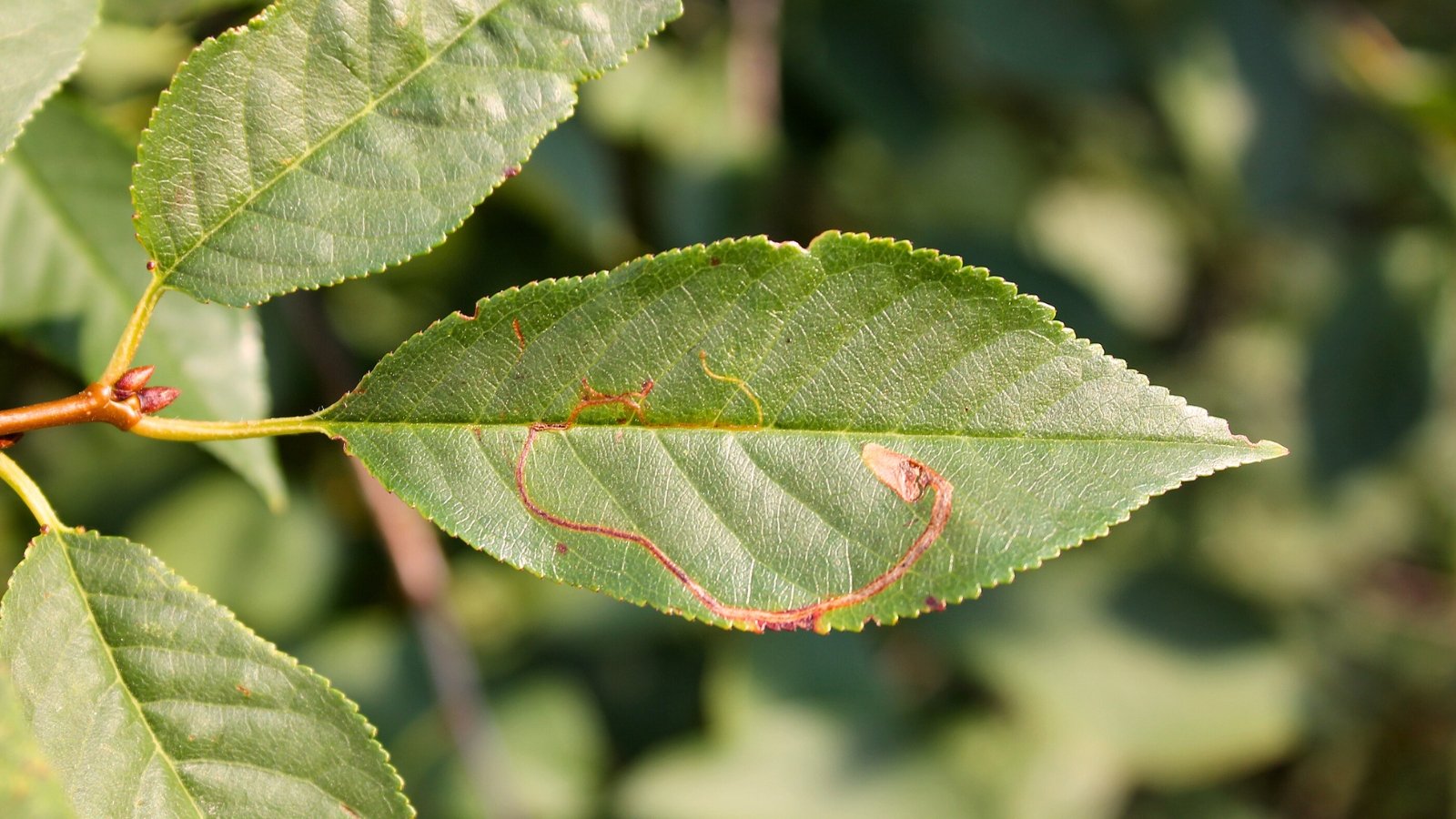

The seen tentiform leafminer may set off some notable damage to apple timber. These tiny bugs feed contained inside the leaf as caterpillars, feeding on the sap after which the tissue. This causes tent-like mines all through the leaves, which can be seen on the bottom.
Throughout the event you uncover that the leaves have these tent-like holes, you may have an issue with leafminers. These holes mix to type tunnels that lighten to white. If leaves have ample of those depressions, they could wrinkle and fall off.
Leafminers usually won’t set off obligatory damage and aren’t a set off for alarm. Nonetheless, when you’ve obtained a very gnarly infestation, ample broken foliage could find yourself in diminished crop top of the range and diminished tree enchancment.
These pests are usually saved in line by very setting nice pure predators, akin to parasitic wasps. Throughout the event you’re combating leafminers and pure predation doesn’t look like doing the job, try making use of spinosad. This pure likelihood can get to the leafminers contained inside the leaves and kill them.
Mites
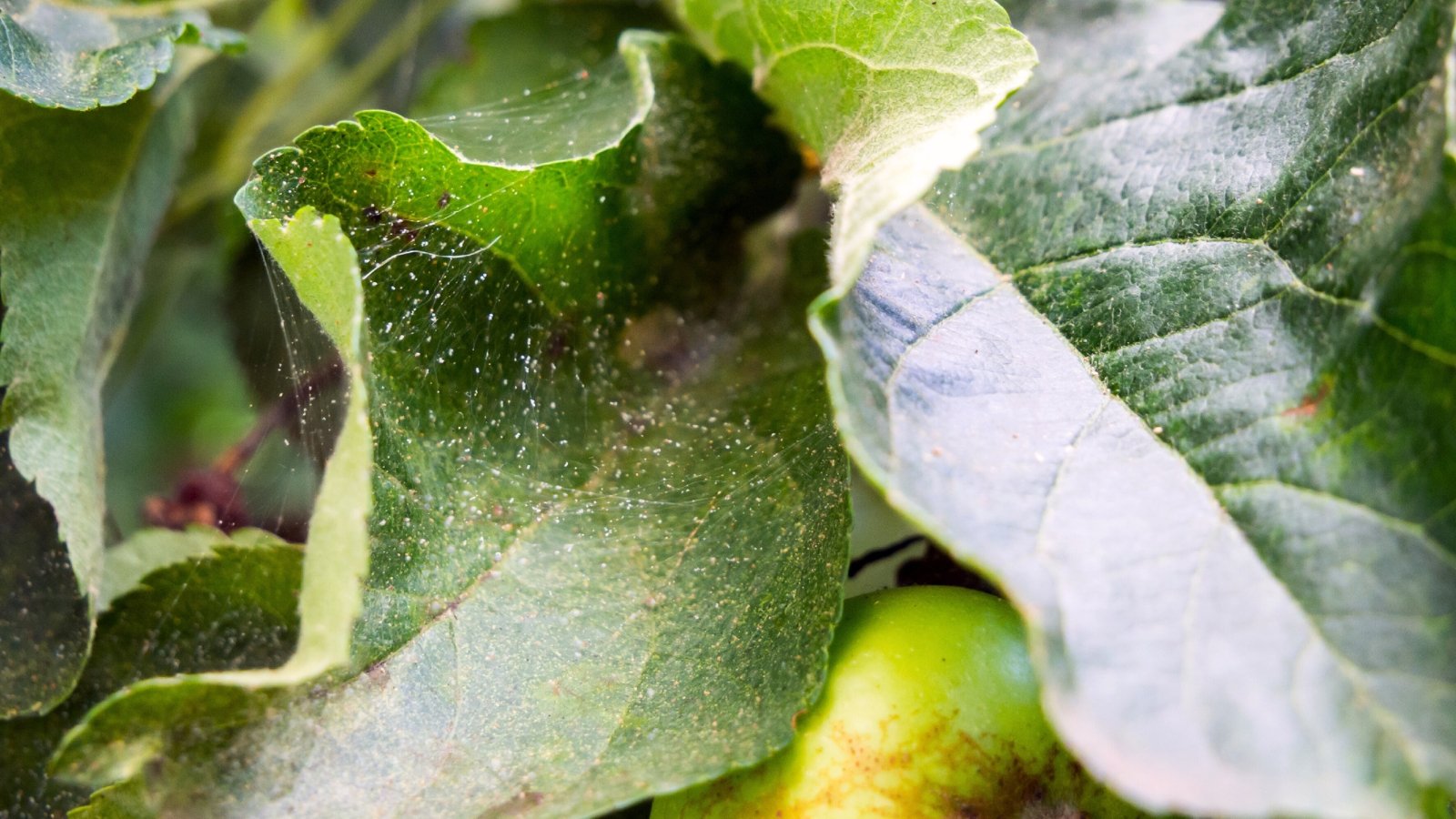

Fairly just a few mites may probably be a problem for apple timber, together with spider mites. These tiny arthropods are literally arachnids, like spiders; they don’t seem to be bugs. Spider mites seem when it ought to get scorching and dry in the midst of the canine days of summer time season season, eradicating chlorophyll from the leaves.
You presumably can resolve a spider mite infestation by wanting rigorously at broken leaves. They may have a stippled look, the place the spider mites sucked out the sap and chlorophyll. The seen areas may need a bronze look, and the leaves may look scorched. If infestations are excessive ample, you may observe webs.
Low populations of spider mites should not an infinite deal and may potential not be an issue in your apple tree. Pure predatory mites are typically ample to maintain spider mites from getting uncontrolled. You presumably can take away spider mites manually with a sharp spray of water. If that doesn’t work, you presumably can try an insecticidal cleaning cleansing cleaning soap or horticultural oil spray.
Fully completely different mites discovered on apple timber embrace the European pink mites and apple-leaf blister mites. You presumably can administration European pink mites with horticultural oil, and it’s possible you’ll ignore apple-leaf blister mites, that are not usually an issue at low populations.
Plum Curculios
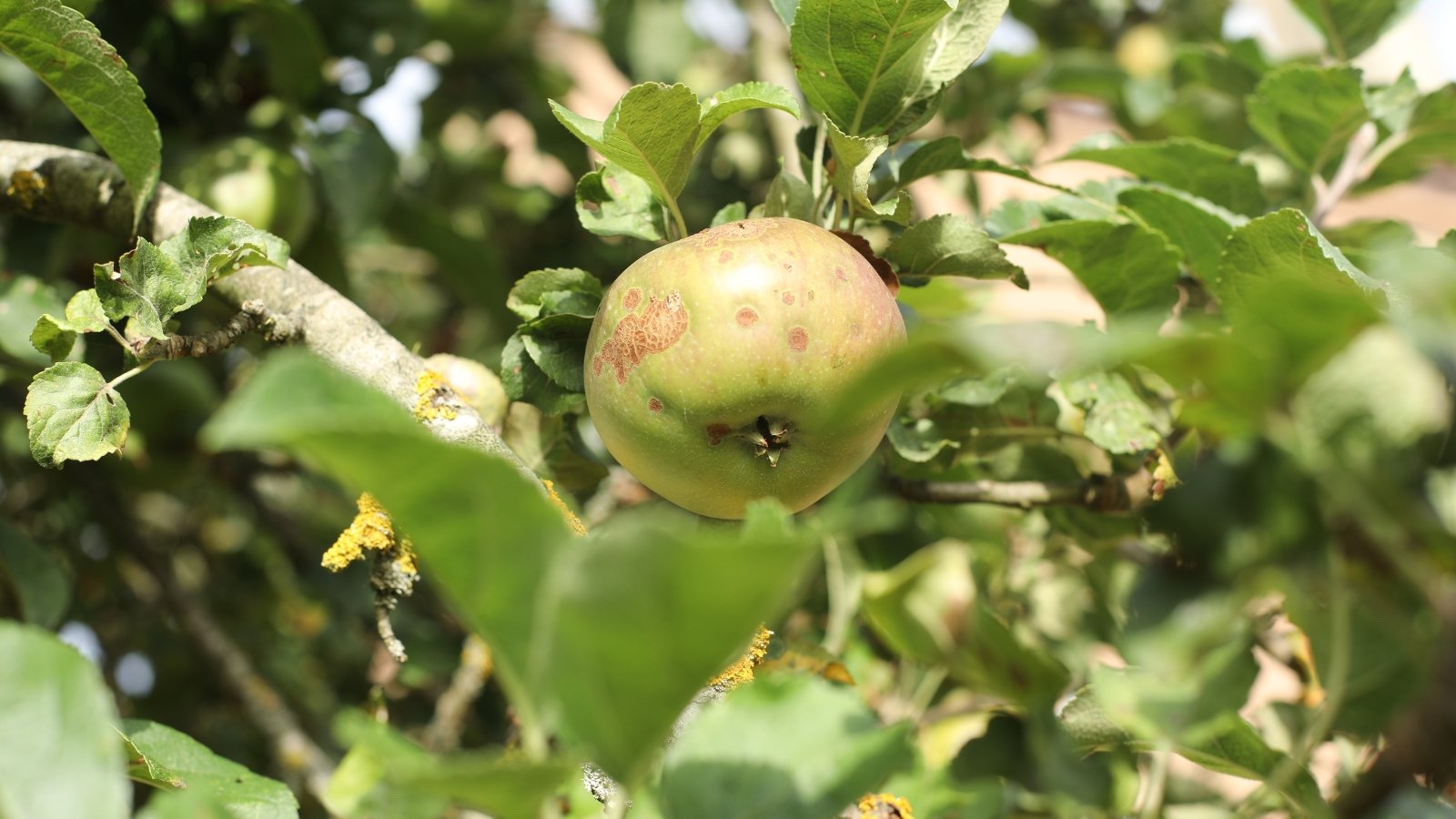

Plum curculios are weevil pests that reside close to apple timber in winter, rising when the native climate warms as so much as lay their eggs in fruits. They usually seem merely as temperatures begin to persistently hit 70°F (21°C). These weevils may set off misshapen fruits that prematurely fall.
You possibly can even see the plum curculios themselves, that are about ¼ inch extended. They’ve darkish our our our bodies with grey patches and an extended snout. You could too resolve them by the crescent-shaped cuts they go away in fruits to position their eggs.
Whereas these pests aren’t devastating to the entire tree, they’re detrimental to the fruits. The rising fruits typically kill the larvae inside, however the blemish stays. Infested fruits will usually drop to the underside anyway.
Take away any infested or fallen fruits straight away. As soon as you’ve got obtained wild plum timber spherical, think about eradicating them. You could too try masking the fruits with kaolin clay, which can block the weevils. If obligatory, you presumably can administration them with sprays that comprise cyhalothrin or zeta cypermethrin.
Stink Bugs
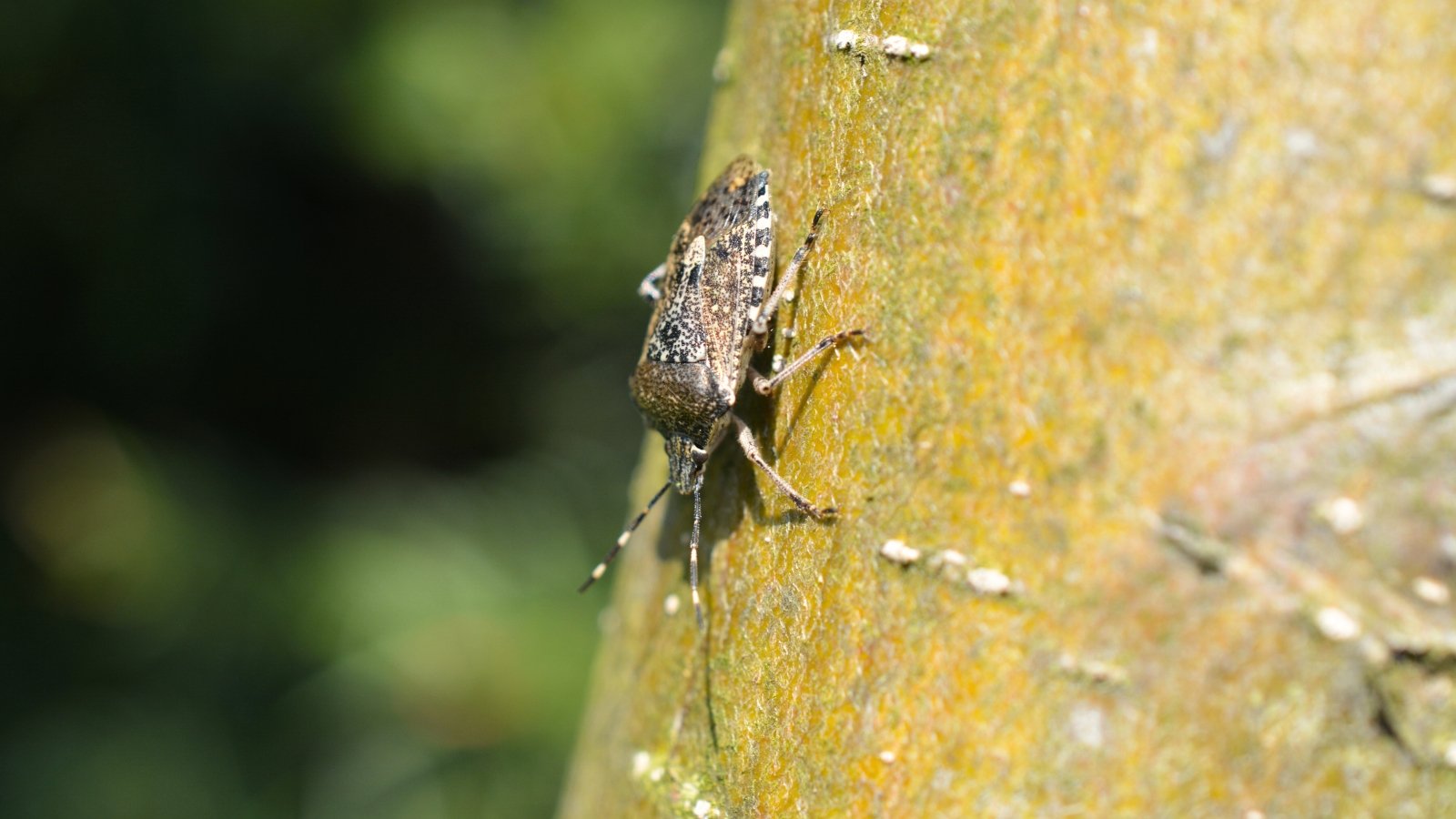

Stink bugs are larger than solely a nuisance all through the residence; they may damage your apples, too. They feed on youthful fruit, injecting it with saliva that kills plant cells close to the chew. Then, they drink the fruit’s juices. Visibly depressed areas type all through the fruits the place stink bugs have eaten.
Concerning ID, you’ll have the ability to see these bugs. They usually are shield-shaped with a flat as soon as extra. Although there are a selection of species, thought-about one among many further widespread culprits is gentle brown. They’re about ½ inch extended, in order that they gained’t be laborious to see.
Stink bugs gained’t be an infinite detriment to your apple tree, although they might damage the fruit. The low price in fruit top of the range may make it unmarketable. Not solely will the fruits be marked, however the inside texture furthermore turns into corky and dry.
An infinite tree with a small inhabitants of stink bugs should nonetheless produce a substantial amount of good fruit. As soon as you’ve got obtained a excessive ample stink bug draw again to warrant eradicating strategies, spray with a product that incorporates cyhalothrin or zeta cypermethrin. Shield stink bug host vegetation like mallow, vetch, morning glory, and plantain far out of your apple timber to stop them.
Tarnished Plant Bugs
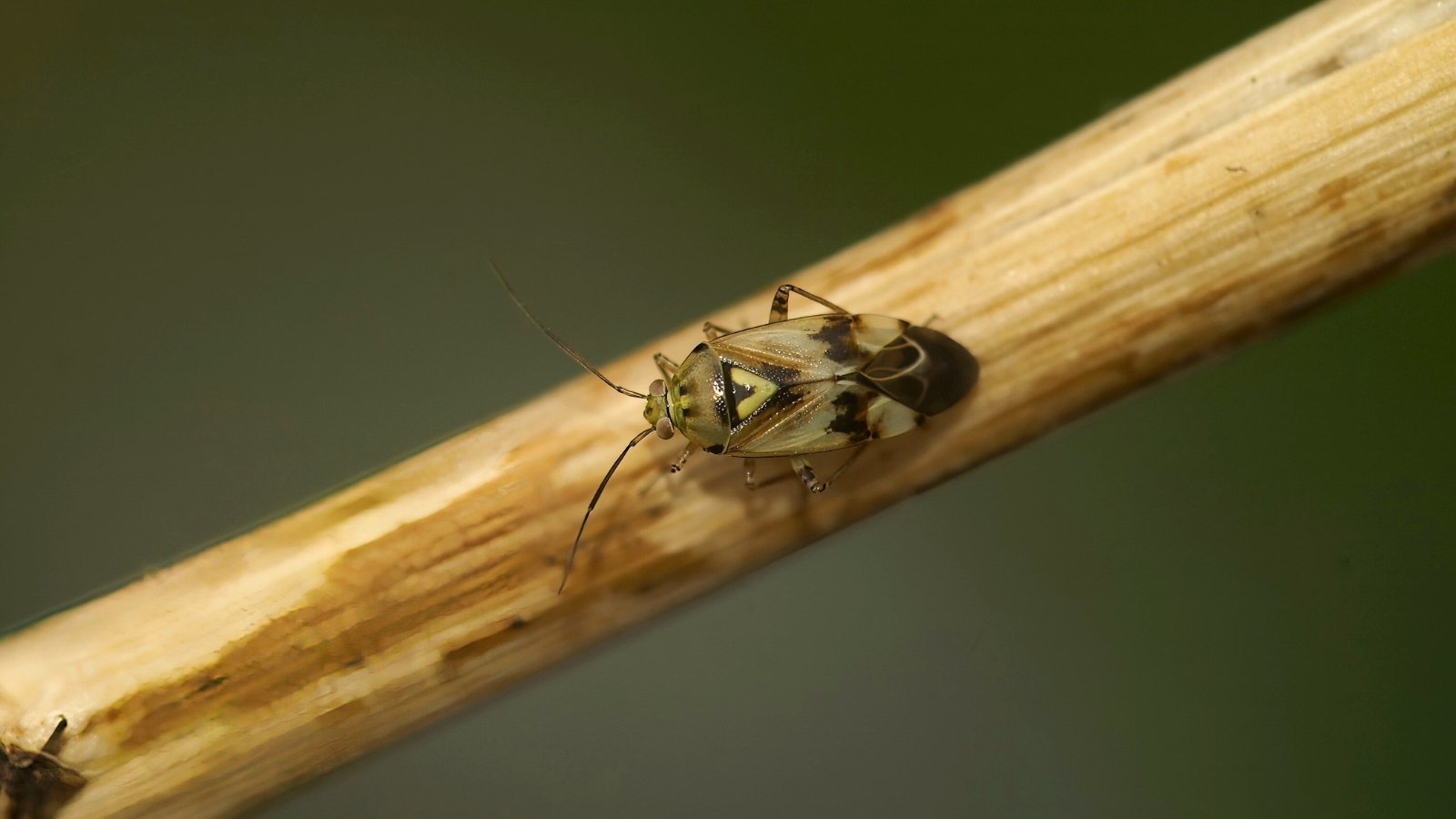

Tarnished plant bugs are similar to stink bugs inside the case of their technique of damage. They feed on the youthful fruits, creating holes and sucking out the juices, lastly leaving pitted, broken fruits of their wake. Typically, entire clusters of fruit will drop.
Your greatest guess at figuring out this pest is to spot the bugs themselves. They’re about ¼” extended, in order that they’re smaller than stink bugs however nonetheless seen. The bugs are typically a brownish shade of yellow, with an oval physique and a “Y” marking between their wings.
Like stink bugs, tarnished plant bugs aren’t going to kill your tree and aren’t an emergency. They are going to, nevertheless, damage your fruit and set off a substantial amount of it to drop. Maintain watch over these pests to substantiate the infestation doesn’t develop.
Throughout the event you’re intent on eradicating tarnished plant bugs, it is best to make use of a spray containing cyhalothrin or zeta cypermethrin. Eradicating early-blooming weeds close to your apple timber can usually reduce the variety of each tarnished plant bugs and stink bugs.
San Jose Scale
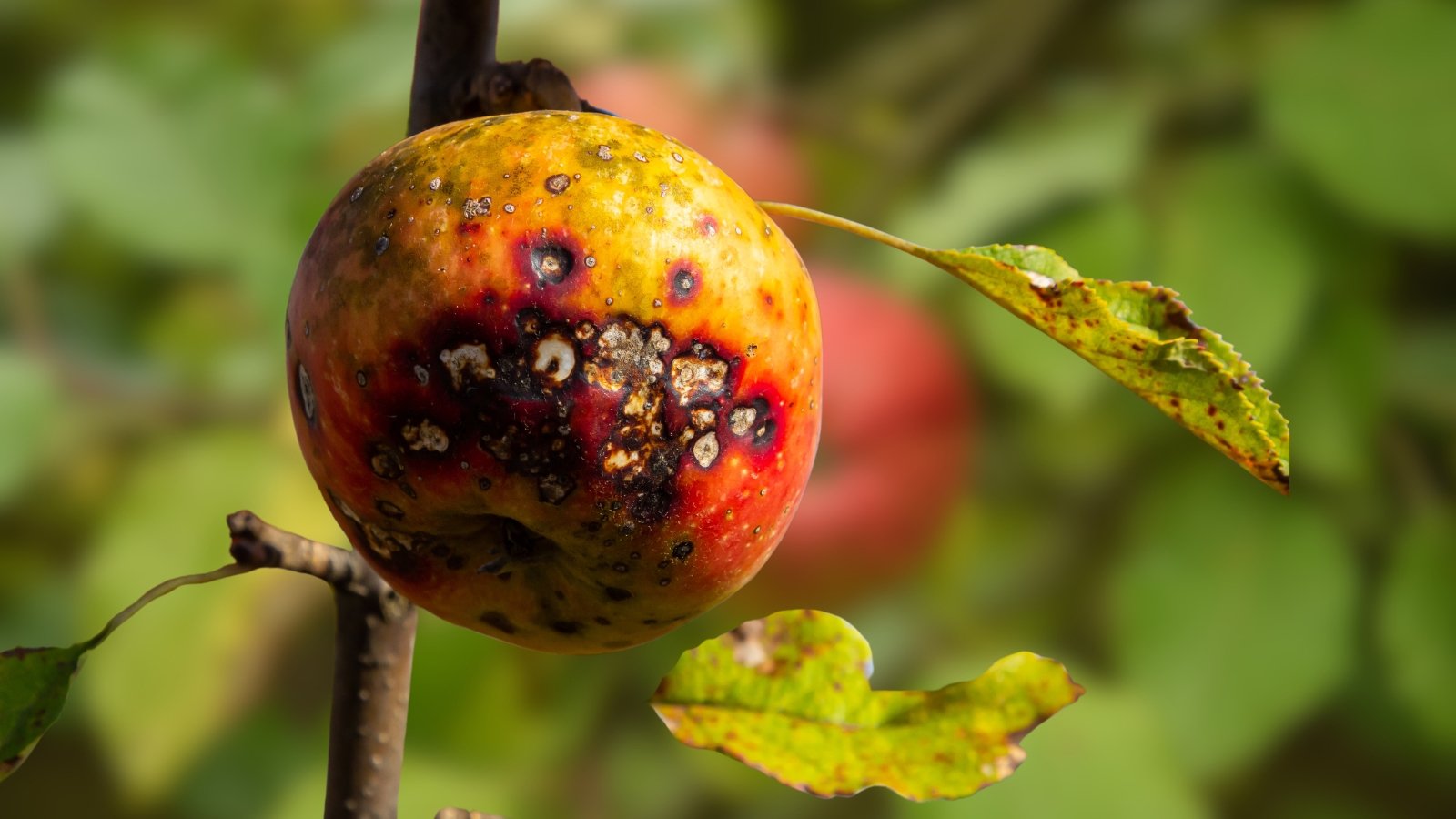

There are quite a few species of scale insect pests, and fairly just a few feed on apple timber. Mainly in all probability essentially the most notable are San Jose scale bugs. They feed on bark and fruit, extracting the sap. San Jose scale bugs are tiny, with each measuring about 0.1 inch in diameter, however their infestations may probably be massive.
Throughout the event you uncover fruits which are lined in what look like darkish flakes, these are the San Jose scale our our our bodies. You may also see bark and tree limbs lined in these small bugs, which look like pepper. You’ll most definitely furthermore see what seems to be like pink circles with white companies all through the fruits.
These scale bugs can kill entire tree limbs and make fruit unmarketable. Throughout the event you wrestle with San Jose scale bugs or have had factors with them beforehand, a preventative strategy is greatest to maintain factors beneath administration.
One feminine San Jose scale insect can produce 400 further scale bugs inside a month and a half, so don’t delay in pest administration. Just a few weeks of uncontrolled unfold may probably be obligatory.
To deal with them, spray 2% horticultural oil on the trunk and branches in early spring ahead of the leaf buds start to open. Then, your greatest guess is to remain on prime of this draw again all season extended, straight spraying any crawlers you uncover with additional diluted horticultural oil spray.
Speckled Inexperienced Fruitworms
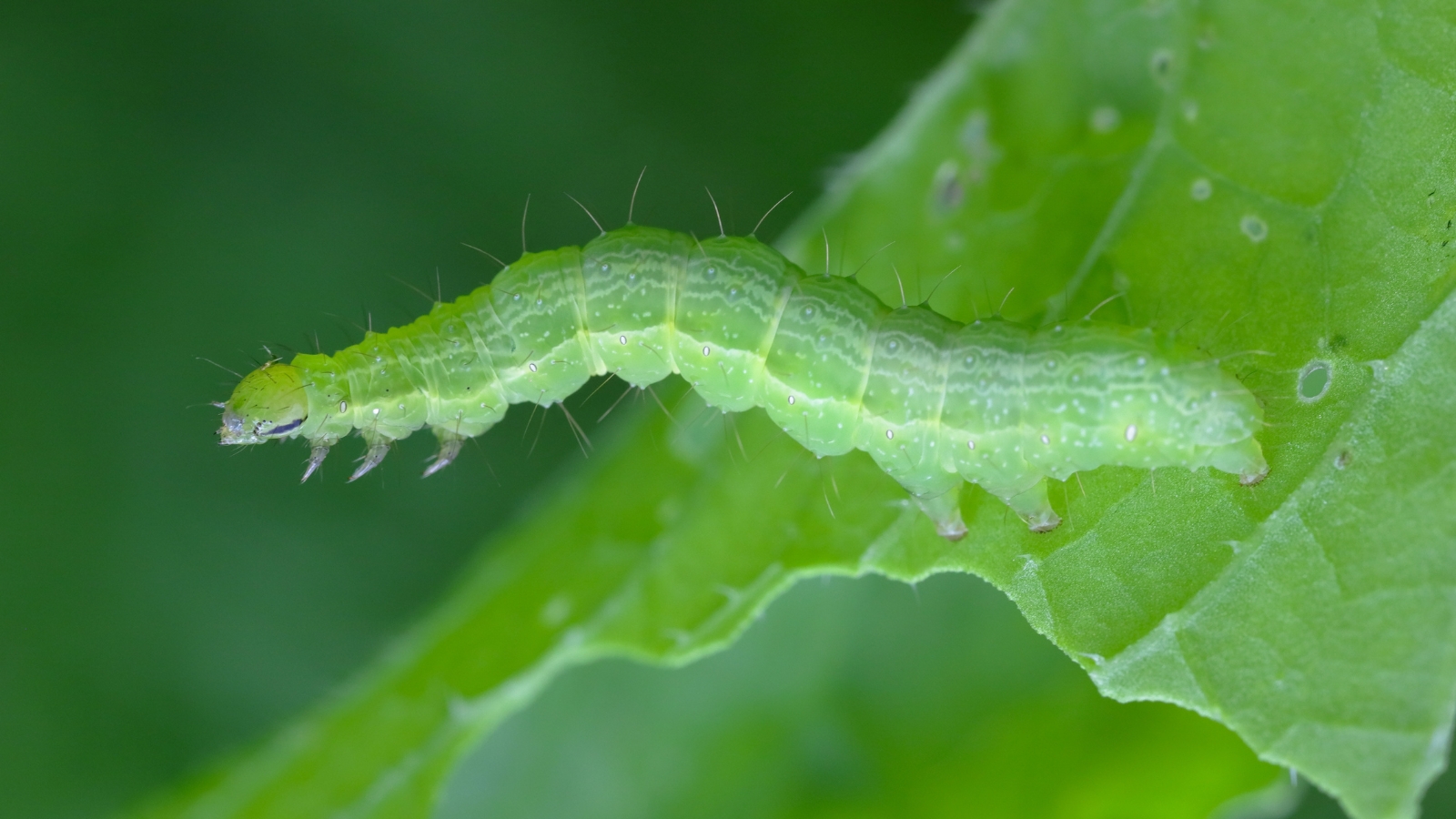

Speckled inexperienced fruitworms are small fruitworms larvae that frequent apple timber and utterly completely different fruit timber. They feed on newly emerged leaves, flowers, and youthful fruits. These fruitworms are energetic for about six weeks per yr in spring.
You presumably can merely ID this pest, because of it seems to be like a inexperienced worm. The youngest speckled inexperienced fruitworms are about ¼ inch extended and a bit grayish. As they mature, they develop to be inexperienced and attain a measurement of nearly two inches. They’re laborious to overlook.
You might uncover utterly completely different indicators as efficiently. Speckled inexperienced fruitworms go away chewed up foliage of their wake, together with deep, spherical holes in fruits. You may also expertise fruit drop sooner than anticipated.
Luckily, speckled inexperienced fruitworms should not horribly detrimental to apple timber. Throughout the event you see them, there’s no should panic, because of the tree is just not in peril. Nonetheless, you may expertise a diminished harvest, so treatment can also be acceptable regardless.
These pests are as straightforward to deal with as they’re to search out out. A single software program program of insecticide akin to Bt or spinosad should get the job achieved. As soon as you’ve got obtained knowledgeable speckled inexperienced fruitworms in earlier years, apply the insecticide preventatively appropriate after petals fall.
[ad_2]
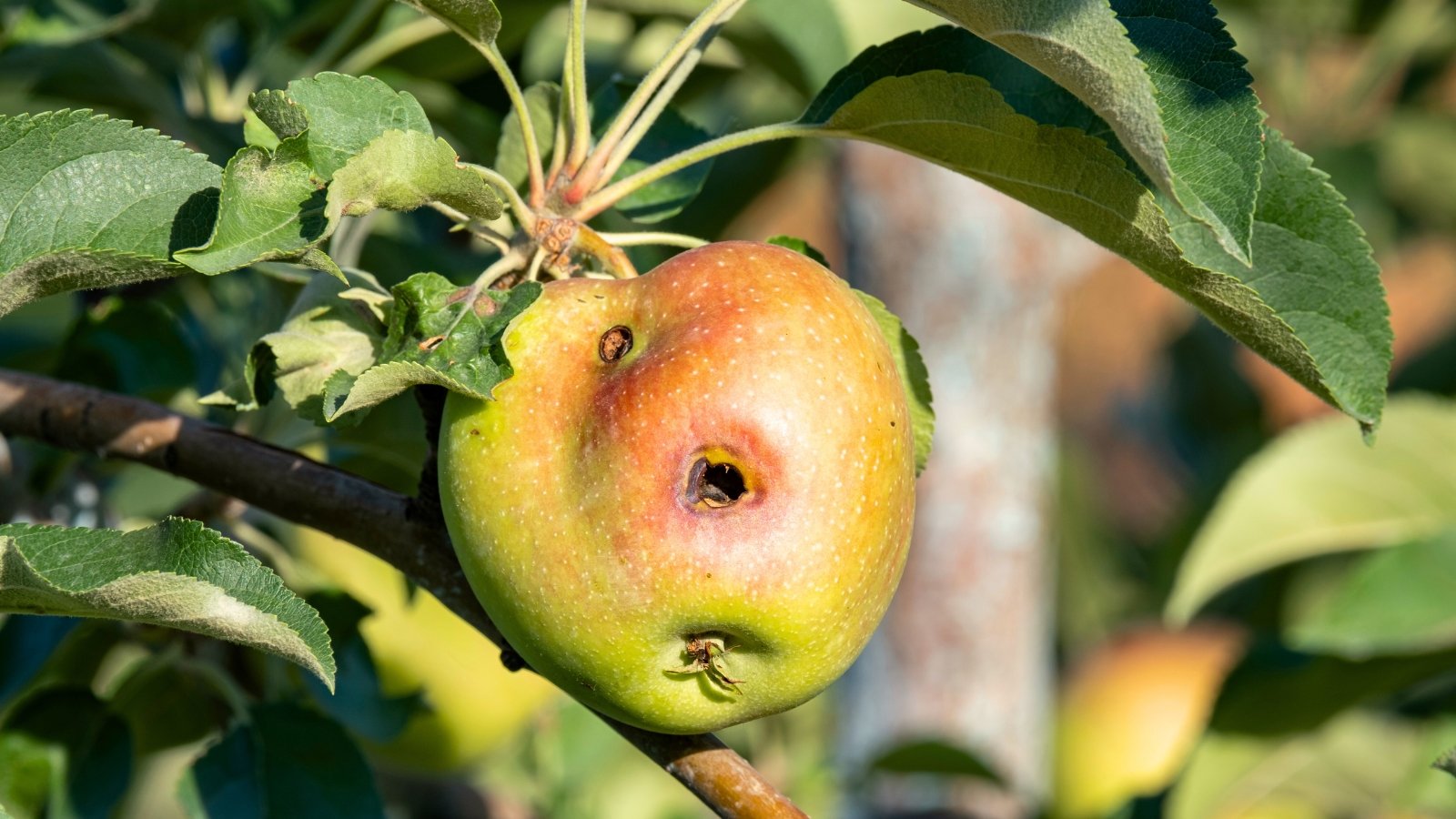
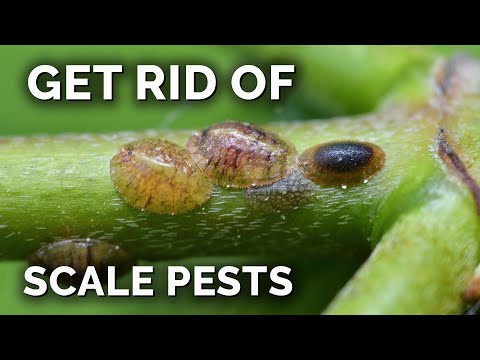
I appreciate the detailed descriptions of each pest and their specific symptoms. This kind of knowledge is essential for anyone looking to maintain a healthy apple tree or orchard without causing harm to beneficial insects.
This article serves as a practical guide for apple tree owners. The emphasis on monitoring and early intervention is a valuable takeaway, ensuring that minor issues don’t escalate into serious problems.
I found the information on codling moths particularly relevant since they are common nuisances in many orchards. The preventative measures listed could help avoid losing fruit quality during harvest season.
The article provides a comprehensive overview of apple pests that can be found in gardens. It’s informative to learn about both the harmful effects of these pests and the methods for controlling them effectively.
It’s interesting how certain pests can affect different parts of the apple tree. The suggestions for natural pest control methods seem useful, especially for those who prefer an eco-friendly approach to gardening.